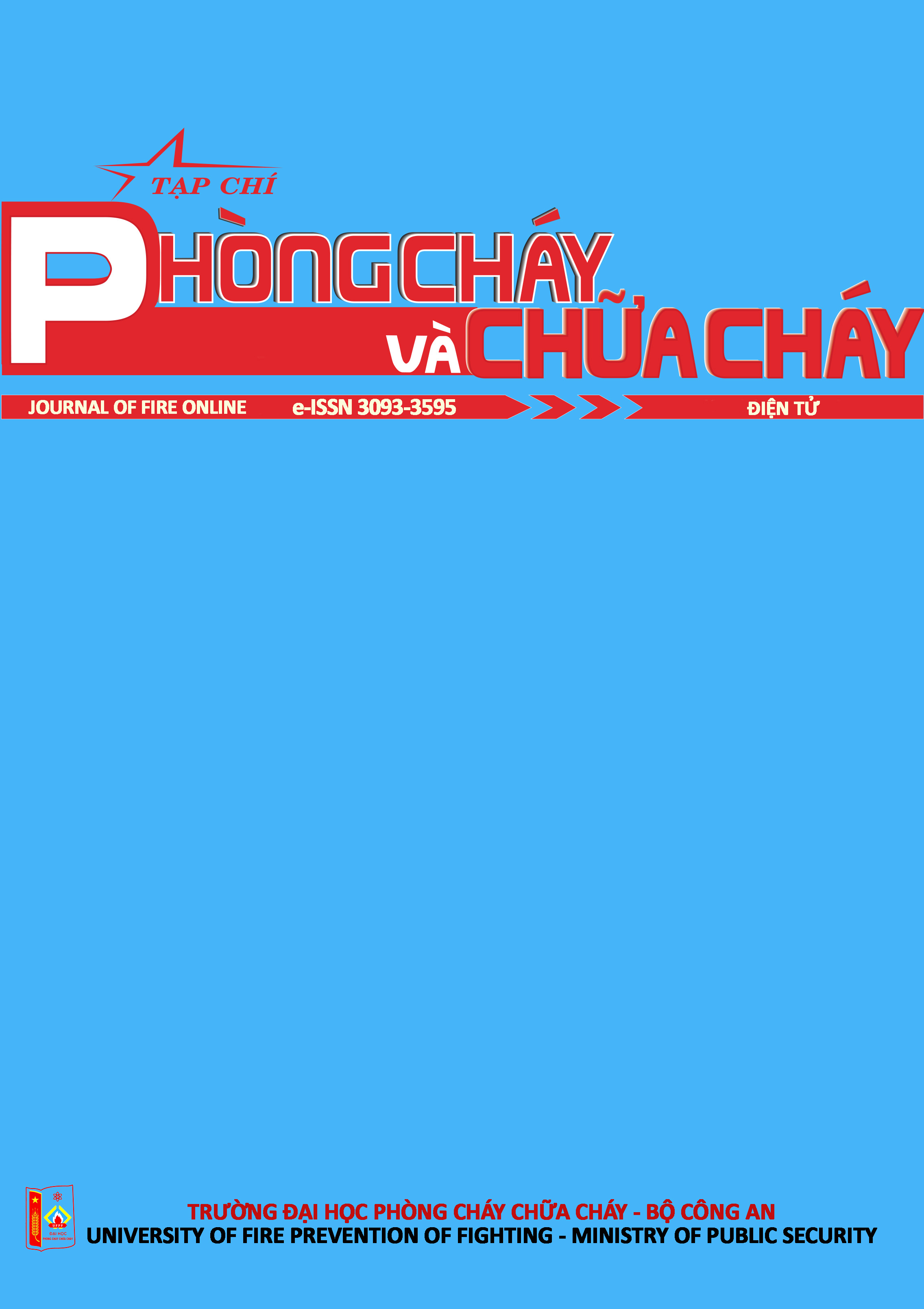XÁC ĐỊNH HỆ SỐ DẪN NHIỆT CỦA SƠN CHỐNG CHÁY BẰNG MÔ HÌNH HỒI QUY TUYẾN TÍNH ĐA BIẾN
DETERMINATION OF THE THERMAL CONDUCTIVITY COEFFICIENT OF INTUMESCENT PAINT USING MULTIVARIATE LINEAR REGRESSION MODEL
Các tệp bổ sung
- Bài viết: PDF
Sơn chống cháy là loại vật liệu dạng phản ứng được sử dụng để bảo vệ kết cấu thép, bê tông hoặc các bề mặt khác khỏi tác động của lửa trong một khoảng thời gian nhất định khi xảy ra cháy. Quá trình trương nở của vật liệu này dưới tác động của nhiệt độ cao trong điều kiện chịu lửa diễn ra rất phức tạp gây nhiều khó khăn cho việc đo đạc trực tiếp giá trị hệ số dẫn nhiệt của nó. Bài viết này trình bày kết quả nghiên cứu xác định hệ số dẫn nhiệt của sơn chống cháy bằng mô hình hồi quy tuyến tính đa biến. Mô hình được xây dựng dựa trên số liệu từ kết quả thử nghiệm chịu lửa theo phương pháp thử nghiệm được quy định tại tiêu chuẩn Châu Âu EN 13381-8:2013 với các mẫu thử là thép được sơn chống cháy. Với sự hỗ trợ của phần mềm phân tích thống kê IBM SPSS Statistics, 16 mô hình hồi quy đã được xây dựng có ý nghĩa thống kê, phản ánh sự phụ thuộc của hệ số dẫn nhiệt của sơn chống cháy (λ) vào hệ số tiết diện của mẫu thép có lớp sơn chống cháy (Ap/V) và độ dày màng khô của lớp sơn chống cháy (dp).
sơn chống cháy, kết cấu thép, độ dẫn nhiệt, độ dày màng khô, hệ số tiết diện, mô hình hồi quy tuyến tính
Intumescent paint is a reactive material that is commonly utilized to protect steel structures, concrete, and other surfaces against fire for a specified period. Due to its complex expansion behavior at high temperatures, direct measurement of its thermal conductivity is challenging. In this study, the thermal conductivity of intumescent paint is estimated using a multivariate linear regression model. Data from fire resistance tests, which were carried out following the European standard EN 13381-8:2013 using steel samples coated with intumescent paint, were analyzed to develop the model. 16 regression models were developed using statistical analysis performed in IBM SPSS Statistics, demonstrating the relationship among thermal conductivity (λ, the section factor of the coated steel sample (Ap/V), and coating dry film thickness (dp).
intumescent paint, steel structures, thermal conductivity coefficient, dry film thickness, section factor, linear regression model
Tài liệu tham khảo
1. A. Lucherini (2016), Experimental study of the behaviour of steel structures protected by different intumescent coatings and exposed to various fire scenarios. MSc thesis, Department of Civil Engineering, Technical University of Denmark (DTU).
2. British Standards Institution (2005). EN 1992-1-2:2005 - Eurocode 3. Design of Steel Structures. General Rules. Structural Fire Design.
3. British Standards Institution (2013), EN 13381-8:2013, Test methods for determining the contribution to the fire resistance of structural members - Part 8: Applied reactive protection to steel members.
4. Trường Đại học Phòng cháy chữa cháy, Phòng thí nghiệm vật liệu, cấu kiện xây dựng và trang thiết bị phòng cháy chữa cháy (2023), Báo cáo thử nghiệm xây dựng cơ sở dữ liệu phục vụ công tác thiết kế bảo vệ chịu lửa cho cấu kiện thép của vật liệu dạng phản ứng – Sơn chống cháy loại trương nở - Theo tiêu chuẩn BS EN 13381-8:2013 (No: 0825/2023-TNCL).






